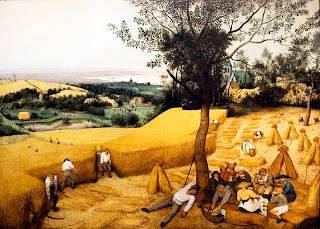 |
| Lufthansa Airbus A321 landing at London Heathrow |
“The Accidental Tourist” is a wonderful book by Anne Tyler
and an equally endearing film adaptation starring William Hurt, Geena Davis,
and an obstreperous Corgi named Edward.
Macon Leary (played by Hurt) is a reluctant traveler and writer of
guides for those who don’t like travel and want to maintain the highest degree
of home-like comfort. Macon can tell
you, for instance, where to find a real American meal in London.
While this is a poor philosophy (foreign cultures are to be
experienced and enjoyed) there is absolutely nothing wrong with traveling
comfortably. And in this last decade since
we were attacked by pitiless terrorists, travel by air has become very
frustrating. In addition to running the
gauntlet of TSA security, the airlines pack the very few available seats like
sardines due to spiraling fuel costs.
In face of this, it is most important to maintain your
equanimity, to be relaxed, and to enjoy the larger journey. Here are a few tips
to make your passage more pleasant.
- When packing, remember that all liquids must stay at home unless in 3.4 oz. (100 ml) or smaller containers. (Half-full larger containers are not allowed). All such liquids must fit in a single, quart-size, zip-top, clear plastic bag. There is no wiggle room.
- The definition of liquid is fluid (sorry). For instance, stick deodorant is considered a solid and may be packed away in your luggage. But gel or aerosol deodorants are considered liquids and must meet the 3.4 oz. limitation. Toothpaste is a liquid – go figure.
- Leave early for the airport. Most have decent restaurants and facilities inside of security. It is far more relaxing to wait for your flight inside of security rather than fretting outside.
- Have your current, unexpired ID ready. Ensure sure that you have a boarding pass, not a ticket receipt. Once the TSA-screener has initialed your boarding pass, put it away... you won't need it again until boarding the aircraft. Your ID may be stowed completely - you won't need it until renting a car or checking into your hotel.
- You cannot bring bottled water through security if greater than 3.4 oz. You may purchase water inside of security and carry it aboard, but here is a little known economical tip… you may pass through security with empty plastic bottles and fill them at a bubbler (water fountain to those who don’t speak Rhode Islandese).
- While scissors longer than 4” and all knives are prohibited, you may carry aboard a fingernail clipper. These come in very handy when opening that impervious bag of trail mix.
- Men, wear a sports coat. Ladies, a bush jacket. They have lots of pockets and will get you through security with great aplomb. Before entering the security line, empty all of your pants and shirt pockets into the sports coat. Take off the sports coat and put it into a bin. Remove any other articles of outer clothing and place in the bin. Also, your 1 quart plastic zip-top baggie of liquids and your belt, all in the same bin. For you old-timers, this includes your handkerchief… all pockets must be empty.
- Put your laptop computer in a separate bin along with any large, cassette video cameras, full sized DVD players, or game consoles. Bulky electronics must be screened separately.
- Wear shoes that are comfortable and easily removable. Remove your shoes and place them on the conveyor with your bags (no need for a bin). You are now ready to pass through the security gate, be it an old-fashioned metal detector or the new backscatter X-ray screening device.
- On the other side of screening, reclaim your belongings. Simply don your sports coat; you can repopulate your pockets later. Don’t forget your laptop.
- Once boarding has begun, keep an eye on the overhead bins ahead of you. If it appears that bin space is running short, put your large bag in the nearest available bin (and remember which row). DO NOT put both of your bags in the overhead – nothing will more quickly arouse the wrath of your fellow passengers. Put the smaller bag under the seat in front of you. Once the aircraft is aloft, you can pull the bag back under your knees and extend your legs into that space.
- Purchase an inflatable, U-shaped pillow. This will keep you from dozing off and drooling on the shoulder of your seatmate. She will appreciate your consideration.
All of these simple suggestions are intended to get you
through security the first time, without re-screening, stress, and delays. Once inside find a Dunkin Donuts and have a
nice latte. Buy a healthy sandwich and
carry it aboard as the snacks served in flight tend to be expensive, unhealthy,
and unsatisfying. Since you are running early due to the aforementioned suggestions,
you may relax, read a newspaper, and participate in that all-time favorite
pastime, people watching.
Have a nice journey and be kind to your fellow passengers.
After all, they are being treated like idiot cattle, too.














